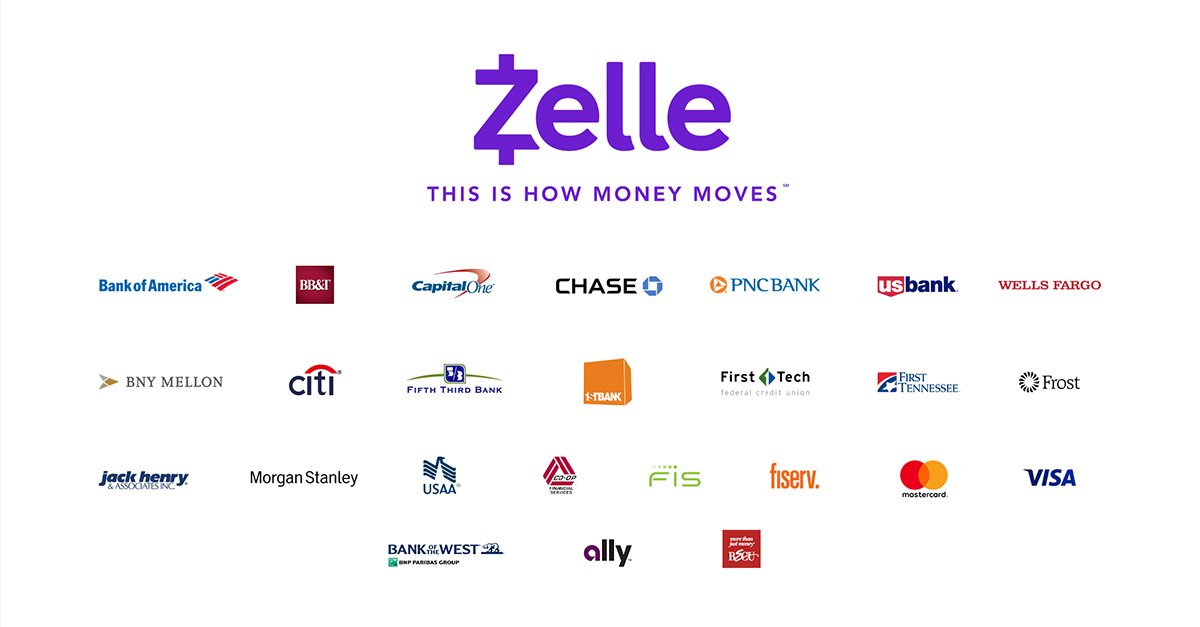Introduction
The landscape of the financial industry has undergone a significant transformation in recent years, driven by the rise of financial technology, or fintech, companies. These innovative startups are disrupting traditional banking models and offering consumers alternative ways to access and manage their finances. In response, banks are realizing the importance of embracing fintech and exploring opportunities for collaboration.
The potential benefits of banks partnering with fintech companies are numerous. By leveraging the technological expertise and agility of fintech startups, banks can enhance their digital capabilities, streamline operations, and improve customer experiences. Additionally, banks can tap into new revenue streams and gain a competitive edge in an increasingly digital era.
However, for banks to successfully partner with fintech companies, they must navigate the unique challenges that come with this collaboration. Regulatory and compliance requirements, differing cultures, and technological integration issues are just a few hurdles that need to be overcome. Nevertheless, when approached strategically and with a collaborative mindset, bank-fintech partnerships can yield mutually beneficial outcomes.
This article will delve into the reasons why banks should consider partnering with fintech companies, the steps to find the right fintech partner, and how to overcome regulatory and compliance challenges. It will also showcase successful bank-fintech partnerships through real-life case studies and provide best practices for establishing productive collaboration. By understanding the opportunities and challenges of bank-fintech partnerships, banks can harness the potential of fintech to drive innovation and improve their services.
Understanding the Fintech Landscape
The fintech industry encompasses a wide range of digitally-focused financial services and solutions. These include online banking, mobile payment apps, robo-advisors, peer-to-peer lending platforms, and blockchain technology, among others. Fintech companies offer innovative and user-friendly solutions that cater to the evolving needs and preferences of modern consumers.
The growth of fintech can be attributed to several factors. Advances in technology, such as cloud computing, artificial intelligence, and big data analytics, have enabled the development of sophisticated financial tools. These tools deliver personalized and convenient experiences to users, bypassing the limitations and complexities of traditional banking systems.
Another driving force behind the fintech revolution is the changing consumer behavior and expectations. Today’s consumers demand seamless digital experiences, instant access to financial services, and personalized recommendations. Fintech companies are well-positioned to fulfill these demands by leveraging technology and data-driven insights.
Furthermore, fintech startups often operate with minimal infrastructure and regulatory constraints, allowing them to be nimble and adaptive to market needs. They can quickly develop and launch innovative solutions, disrupting traditional banking models that are burdened by legacy systems and bureaucratic processes.
While fintech has disrupted the financial industry, it has also presented opportunities for collaboration. Banks, with their established customer base, regulatory compliance, and financial expertise, can partner with fintech companies to leverage their innovative solutions and enhance their own service offerings.
It is important for banks to understand the evolving fintech landscape and identify the areas where collaboration can bring the most value. This requires staying informed about the latest technological trends, monitoring emerging fintech startups, and conducting thorough market research to assess customer needs and preferences. By having a comprehensive understanding of the fintech landscape, banks can identify potential opportunities and form strategic partnerships that benefit both parties involved.
Why Banks Should Partner With Fintech
The banking industry is facing increasing pressure to adapt and innovate in the digital age. Traditional banks are often burdened by legacy systems, complex processes, and outdated technology, making it challenging to deliver the seamless and personalized experiences that consumers now expect. This is where partnering with fintech companies can provide significant advantages.
First and foremost, fintech companies bring a fresh perspective and innovative approach to financial services. They are at the forefront of technological advancements and have the ability to develop and deploy cutting-edge solutions quickly. By collaborating with fintech startups, banks can access this expertise and address gaps in their digital capabilities.
Furthermore, the customer-centric focus of fintech companies can greatly benefit banks. Fintech startups have revolutionized user experiences, offering intuitive mobile apps, personalized financial management tools, and convenient online banking portals. By partnering with fintech, banks can improve their own user interfaces and customer journeys, ultimately enhancing customer satisfaction and loyalty.
In addition, fintech partnerships can help banks streamline their operations and reduce costs. Fintech solutions like automation, artificial intelligence, and data analytics can enhance efficiency and improve the accuracy of financial processes. For example, banks can leverage robo-advisors to provide automated investment advice or utilize AI-powered chatbots for customer support, reducing the need for manual intervention.
Collaborating with fintech startups can also enable banks to explore new revenue streams and expand their product offerings. Fintech companies often specialize in niche areas such as peer-to-peer lending, crowdfunding, or alternative payment solutions. By partnering with these companies, banks can access these specialized services and tap into previously untapped market segments.
Moreover, partnering with fintech can help banks stay ahead in terms of innovation and competitiveness. The financial industry is rapidly evolving, and banks need to keep pace with emerging technologies and changing consumer expectations. By collaborating with fintech startups, banks can leverage their agility and expertise to develop innovative solutions that keep them at the forefront of the industry.
Overall, the benefits of banks partnering with fintech companies are numerous. By embracing fintech, banks can enhance their digital capabilities, improve customer experiences, streamline operations, explore new revenue streams, and stay ahead in a highly competitive market. Through strategic collaboration, banks can leverage the strengths of fintech startups to drive innovation and meet the evolving needs of their customers.
Finding the Right Fintech Partner
When it comes to partnering with fintech companies, banks need to carefully evaluate potential partners to ensure a successful collaboration. Finding the right fintech partner involves considering various factors, including strategic alignment, technological compatibility, and cultural fit.
Firstly, banks should assess their strategic goals and objectives in order to identify fintech companies that align with their vision. This requires a clear understanding of the specific areas where collaboration is needed, whether it is enhancing customer experiences, streamlining operations, or exploring new business opportunities. By having a clear focus, banks can narrow down their search and target fintech companies that can address their specific needs.
Technological compatibility is another crucial consideration. Banks need to ensure that the fintech partner’s technology infrastructure can integrate seamlessly with their existing systems. It is important to assess the compatibility of data formats, API capabilities, security measures, and scalability to ensure a smooth integration process. Additionally, banks should evaluate the technology roadmap of the fintech partner to ensure that it aligns with their long-term technology strategy.
Another aspect to consider is cultural fit. Banks and fintech companies may have different organizational cultures, work processes, and decision-making structures. It is important to assess the cultural compatibility and establish open lines of communication to ensure effective collaboration. Regular meetings and workshops can help align expectations and foster a collaborative environment between the parties involved.
Furthermore, banks should evaluate the track record and credibility of potential fintech partners. This includes assessing their financial stability, industry reputation, regulatory compliance, and client references. Conducting due diligence and gathering feedback from industry experts can help banks make informed decisions and reduce potential risks associated with the partnership.
Lastly, banks should consider the potential for mutual benefit in the partnership. It is important to evaluate the value proposition and innovation potential that the fintech partner brings to the table. Banks should assess whether the partnership can create a competitive advantage, enhance customer experiences, and generate new revenue opportunities.
In summary, finding the right fintech partner requires a thorough evaluation of strategic alignment, technological compatibility, cultural fit, credibility, and mutual benefits. By carefully assessing these factors, banks can identify fintech companies that can complement their capabilities and drive innovation, paving the way for a successful collaboration.
Overcoming Regulatory and Compliance Challenges
One of the main challenges banks face when partnering with fintech companies is navigating the complex landscape of regulatory and compliance requirements. Banks operate in highly regulated environments, and any collaboration with fintech startups must comply with these regulations to ensure the protection of customer data and maintain the integrity of the financial system.
There are several steps banks can take to overcome regulatory and compliance challenges in a bank-fintech partnership:
1. Conduct thorough due diligence: Before entering into a partnership, banks should conduct comprehensive due diligence on the fintech company. This includes assessing the fintech company’s regulatory compliance frameworks, data protection policies, and risk management practices. By ensuring that the fintech partner adheres to applicable regulations and industry best practices, banks can minimize potential compliance risks.
2. Identify regulatory requirements: Banks need to understand the specific regulatory requirements that apply to the partnership. This includes assessing data privacy and protection regulations, anti-money laundering (AML) and know-your-customer (KYC) requirements, and licensing or registration obligations. By identifying and understanding these requirements, banks can ensure that the partnership is structured in a compliant manner.
3. Establish a strong legal framework: Banks should work closely with legal experts to draft comprehensive agreements and contracts that address regulatory and compliance considerations. These legal documents should clearly define roles, responsibilities, data protection protocols, and compliance obligations of both parties. Additionally, banks should include provisions for regular audits and reporting to monitor ongoing compliance.
4. Collaborate with regulators: Building open lines of communication with regulatory authorities is crucial. Banks should engage in regular dialogue with regulators to seek guidance, clarify any regulatory concerns, and obtain necessary approvals. By proactively involving regulators in the partnership, banks can demonstrate their commitment to compliance and build trust.
5. Invest in robust cybersecurity: Cybersecurity is a critical aspect of compliance in a bank-fintech partnership. Banks should implement strong security measures to protect sensitive customer information and prevent unauthorized access. This includes implementing encryption protocols, robust authentication systems, and regular security audits. Banks should also ensure that the fintech partner has adequate cybersecurity measures in place.
6. Stay abreast of regulatory changes: The regulatory landscape is constantly evolving. Banks should establish mechanisms to stay informed about new regulations, updates, and industry best practices. This may involve collaboration with legal and compliance experts, attending industry conferences, and engaging in regulatory forums. By staying proactive, banks can adapt to changes and ensure ongoing compliance.
By addressing regulatory and compliance challenges proactively, banks and fintech companies can forge successful partnerships that comply with regulatory requirements, protect customer data, and contribute to a secure and trustworthy financial ecosystem.
Building a Collaborative Environment
Establishing a collaborative environment is crucial for a successful partnership between banks and fintech companies. Collaboration fosters trust, enhances communication, and facilitates the exchange of knowledge and expertise. Here are some key strategies for building a collaborative environment:
1. Establish shared goals: Banks and fintech companies should align their goals and objectives to ensure a shared vision for the partnership. This involves open discussions and brainstorming sessions to identify common areas of interest and define mutual expectations. By establishing shared goals, both parties can work towards a common purpose and drive the partnership forward.
2. Foster a culture of openness and transparency: Both banks and fintech companies should cultivate an environment where open and transparent communication is encouraged. This means creating a safe space for sharing ideas, providing feedback, and addressing any concerns or challenges that may arise. Regular meetings, workshops, and collaborative tools can facilitate effective communication and foster a sense of trust and collaboration.
3. Encourage cross-functional teams: Building cross-functional teams that consist of personnel from both the bank and fintech company promotes collaboration and a deeper understanding of each other’s strengths and perspectives. These teams can work together on various aspects of the partnership, such as technology integration, product development, and compliance. By having diverse expertise and viewpoints, cross-functional teams can drive innovation and find creative solutions to challenges.
4. Promote knowledge sharing: Continuous learning and knowledge sharing are essential in a collaborative environment. Banks and fintech companies should encourage employees to share their expertise, insights, and best practices. This may involve organizing knowledge sharing sessions, workshops, or creating digital platforms for information exchange. By fostering a culture of learning, both banks and fintech companies can continually improve their processes and stay ahead of industry trends.
5. Embrace flexibility and adaptability: Collaboration requires flexibility and adaptability from both parties. Banks and fintech companies should be open to change, willing to adjust their strategies or plans based on feedback and evolving market conditions. This flexibility allows for experimentation, iteration, and continuous improvement. By embracing flexibility, both sides can drive innovation and uncover new opportunities together.
6. Recognize and celebrate achievements: Celebrating milestones and achievements along the partnership journey is important for building a positive and collaborative environment. Recognizing the efforts and contributions of individuals and teams motivates and reinforces a sense of accomplishment. This recognition can take the form of informal gestures, such as shout-outs or team celebrations, as well as formal rewards and incentives.
By implementing these strategies, banks and fintech companies can create a collaborative environment that fosters trust, encourages open communication, and drives innovation. A collaborative mindset and environment are essential for leveraging the strengths of both parties and maximizing the potential of the bank-fintech partnership.
Benefits for Banks and Fintech Companies
The partnership between banks and fintech companies can yield numerous benefits for both parties involved. By leveraging each other’s strengths and expertise, banks and fintech companies can unlock new opportunities, improve their offerings, and stay competitive in the rapidly evolving financial industry.
1. Enhanced innovation: Fintech companies are known for their innovative solutions and agility, while banks bring their extensive industry knowledge and customer base. The partnership allows for the combination of these strengths, resulting in enhanced innovation. Banks can tap into the fintech company’s technology and ideas, while fintech companies can benefit from the bank’s regulatory compliance and industry experience.
2. Improved customer experience: Fintech companies excel in delivering user-friendly interfaces and personalized experiences, while banks have established customer relationships and deep financial expertise. Through collaboration, banks can enhance their customer experience by integrating fintech solutions that provide seamless digital banking, personalized financial management tools, and faster transaction processing.
3. Streamlined operations: Fintech solutions such as automation, machine learning, and data analytics can assist banks in streamlining their operations and reducing costs. Process automation can eliminate manual tasks, thereby improving efficiency and accuracy. Machine learning algorithms can analyze vast amounts of data to detect fraud or assess creditworthiness. By incorporating these fintech capabilities, banks can optimize their operations and deliver services more efficiently.
4. Access to new customer segments: Fintech companies often target underserved or niche market segments that traditional banks may not have reached. By partnering with fintech, banks can tap into these new customer segments and expand their reach. For example, a bank can collaborate with a peer-to-peer lending platform to offer loans to borrowers who may not have qualified through traditional channels.
5. Increased revenue opportunities: Fintech partnerships can drive new revenue streams for banks. By integrating fintech solutions into their product offerings, banks can open doors to additional revenue sources. For instance, banks can leverage fintech capabilities to provide innovative payment solutions or offer value-added services like financial planning tools or access to alternative investment options.
6. Regulatory compliance: Banks are subject to strict regulatory requirements, and fintech companies must navigate the regulatory landscape when entering the financial industry. Collaborating allows both parties to leverage each other’s strengths in compliance. Banks can guide fintech companies in meeting regulatory requirements while fintech companies can bring technological tools that help banks address compliance challenges efficiently.
7. Competitive advantage: In a highly competitive financial industry, collaboration with fintech companies can provide banks with a competitive edge. By embracing fintech innovation, banks can differentiate themselves by offering unique, innovative services that meet the evolving needs of customers. This can help banks attract new customers, retain existing ones, and stay ahead of traditional competitors.
Overall, partnering with fintech companies can provide significant benefits for banks, including enhanced innovation, improved customer experiences, streamlined operations, access to new markets, increased revenue opportunities, regulatory compliance, and a competitive advantage. Collaboration between banks and fintech companies fosters a mutually beneficial relationship that drives growth, customer satisfaction, and industry innovation.
Case Studies: Successful Bank-Fintech Partnerships
Several successful bank-fintech partnerships have demonstrated the potential of collaboration in driving innovation and transforming the financial industry. These partnerships showcase how banks and fintech companies can leverage each other’s strengths to deliver improved products and services. Let’s explore a few notable examples:
1. JPMorgan Chase and OnDeck: JPMorgan Chase, one of the largest banks in the United States, partnered with OnDeck, an online small business lending platform. By integrating OnDeck’s loan origination technology into its operations, JPMorgan Chase was able to streamline the lending process for small businesses. The partnership allowed JPMorgan Chase to provide faster, more efficient loan decisions while leveraging OnDeck’s expertise in underwriting and risk assessment.
2. BBVA and Prosper: BBVA, a global financial group, collaborated with Prosper, an online peer-to-peer lending marketplace. Through the partnership, BBVA gained access to Prosper’s platform and data analytics capabilities, allowing the bank to offer personalized loan recommendations to its customers. The partnership enabled BBVA to enhance its lending services, improve customer experiences, and expand its digital footprint in the lending market.
3. Citi and Chain: Citi, a leading global bank, partnered with Chain, a blockchain technology company. The collaboration involved using Chain’s blockchain platform to develop solutions for secure and efficient payment transactions. Through this partnership, Citi leveraged Chain’s expertise in distributed ledger technology to explore the potential of blockchain in improving payment processes, reducing costs, and enhancing transparency in the financial sector.
4. Santander and Ripple: Santander, a multinational bank, collaborated with Ripple, a blockchain-based payments solution provider. The partnership involved using Ripple’s technology to enable fast, low-cost cross-border payments for Santander’s customers. By leveraging Ripple’s blockchain network, Santander was able to enhance the efficiency and speed of international money transfers while providing a seamless user experience for its customers.
5. Goldman Sachs and Kensho: Goldman Sachs, a prominent investment bank, partnered with Kensho, an artificial intelligence and data analytics company. This collaboration aimed to develop innovative analytical tools that leverage AI and machine learning to enhance financial decision-making. By integrating Kensho’s technology into its investment research processes, Goldman Sachs was able to provide more comprehensive and accurate insights to its clients, improving investment strategies and outcomes.
These case studies demonstrate the diverse ways in which banks and fintech companies can collaborate to drive innovation and deliver value to customers. Whether it is streamlining lending processes, leveraging blockchain technology, enhancing cross-border payments, or utilizing AI and data analytics, successful bank-fintech partnerships have shown the potential to transform the financial industry and improve the services offered to customers.
Best Practices for Partnering With Fintech
Partnering with fintech companies can be a mutually beneficial endeavor, but it requires careful planning and execution. To ensure a successful partnership, banks should follow these best practices:
1. Clearly define partnership objectives: Clearly define the objectives and expected outcomes of the partnership. This involves identifying the specific areas where collaboration is needed, such as improving digital capabilities, enhancing customer experiences, or exploring new business opportunities. Setting clear objectives provides a roadmap and helps align both parties’ expectations.
2. Conduct thorough due diligence: Before entering into a partnership, conduct comprehensive due diligence on the fintech company. Assess their financial stability, regulatory compliance, technology infrastructure, and industry reputation. Ensure that the fintech partner has the necessary expertise, resources, and capacity to support the partnership effectively.
3. Establish effective communication channels: Open and regular communication channels are vital for successful collaboration. Establish clear lines of communication between the teams from both the bank and the fintech company. Foster a culture of open dialogue, encourage information sharing, and hold regular meetings to discuss progress, challenges, and opportunities.
4. Define roles and responsibilities: Clearly define the roles and responsibilities of each party in the partnership. Outline each party’s contributions, deliverables, and timelines. This clarity helps avoid misunderstandings and ensures that both parties are aligned and accountable for their respective tasks.
5. Address regulatory and compliance considerations: Collaboration with fintech companies requires compliance with regulatory requirements. Ensure that the partnership operates within legal and regulatory frameworks. Identify regulatory challenges and work together to develop solutions that meet compliance obligations while leveraging the fintech innovation.
6. Foster a culture of innovation: Encourage a culture of innovation in the partnership. Emphasize the importance of exploring new ideas, experimenting with technology, and embracing a mindset of continuous improvement. Create an environment that encourages input from both the bank and the fintech company, fostering creativity and enabling the development of innovative solutions.
7. Establish a flexible partnership framework: Recognize that the partnership may need to evolve and adapt over time. Establish a flexible partnership framework that allows for adjustments and iterations based on feedback and changing market conditions. Prioritize agility and adaptability to stay responsive to customer needs and industry trends.
8. Measure and evaluate partnership outcomes: Establish metrics and key performance indicators (KPIs) to measure the success and impact of the partnership. Regularly evaluate and review the partnership’s outcomes against these metrics. This evaluation helps identify areas for improvement, track progress, and make strategic decisions to ensure the partnership’s ongoing success.
By following these best practices, banks can establish strong and successful partnerships with fintech companies. These partnerships can drive innovation, improve customer experiences, and create new business opportunities that benefit both the bank and the fintech company.
Conclusion
Partnering with fintech companies offers numerous benefits for banks, including enhanced innovation, improved customer experiences, streamlined operations, access to new customer segments, increased revenue opportunities, regulatory compliance, and a competitive advantage. By collaborating with fintech startups, banks can leverage their technological expertise, agility, and customer-centric approach to drive innovation and transform their services.
However, successful bank-fintech partnerships require careful planning, clear communication, and a collaborative mindset. Banks should thoroughly assess potential fintech partners, considering factors such as strategic alignment, technological compatibility, cultural fit, and credibility. Overcoming regulatory and compliance challenges is crucial, as banks must ensure that the partnership complies with regulatory requirements and protects customer data.
To foster a successful partnership, banks should establish a collaborative environment by setting shared goals, promoting open communication, encouraging knowledge sharing, and embracing flexibility. Real-life case studies have showcased the potential of bank-fintech partnerships, where collaboration has resulted in improved lending processes, enhanced payment systems, personalized banking services, and innovative investment tools.
Adhering to best practices such as clearly defining partnership objectives, conducting thorough due diligence, addressing regulatory considerations, fostering a culture of innovation, and establishing flexible partnership frameworks are essential for maximizing the benefits of the bank-fintech partnership.
In conclusion, by strategically partnering with fintech companies, banks can harness innovation, enhance customer experiences, drive operational efficiency, and create new revenue opportunities. The evolving financial landscape presents a unique opportunity for banks to leverage the strengths of fintech startups and establish collaborative partnerships that propel the industry forward.

























